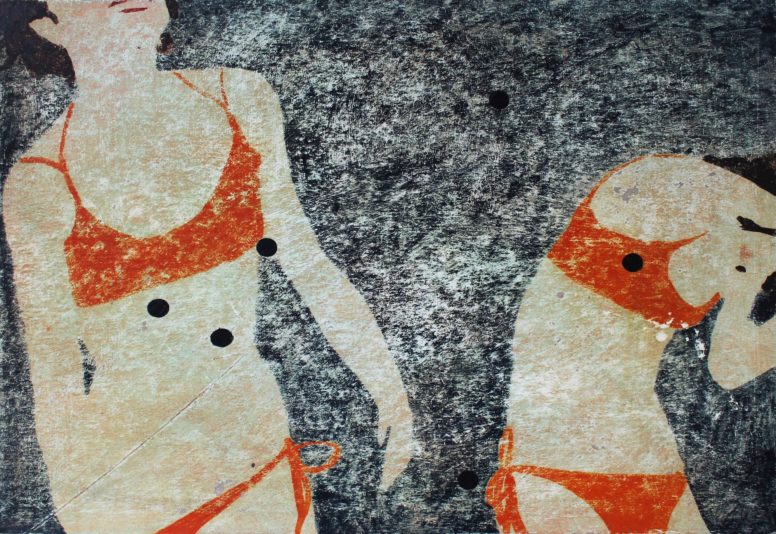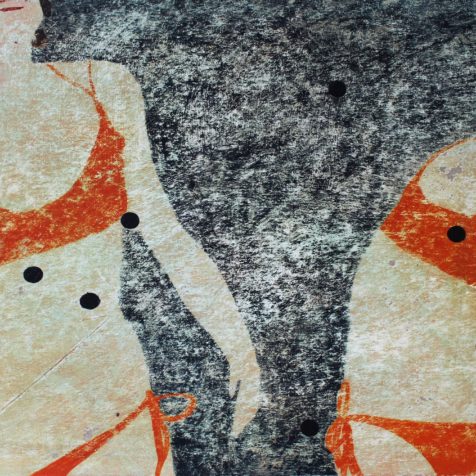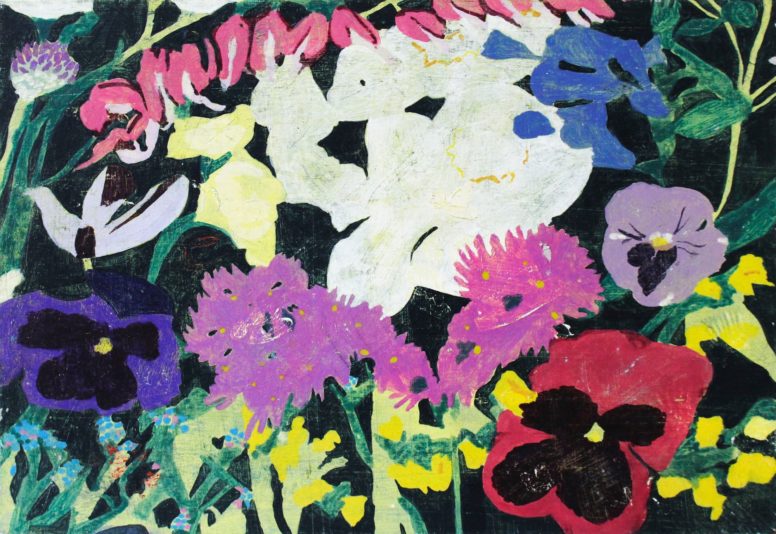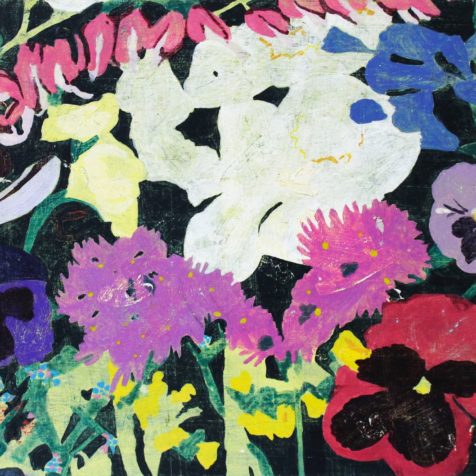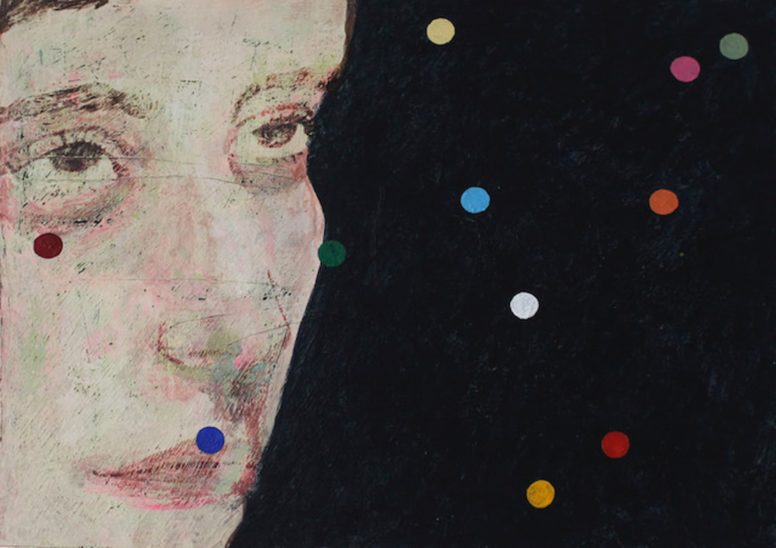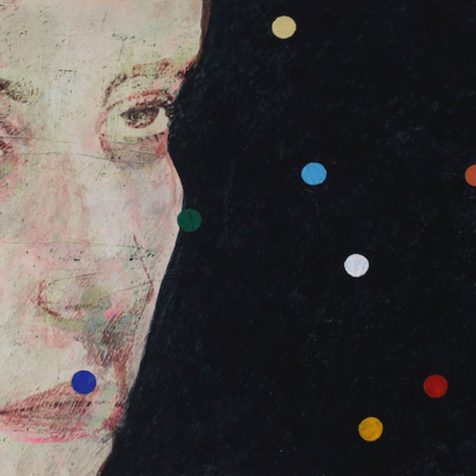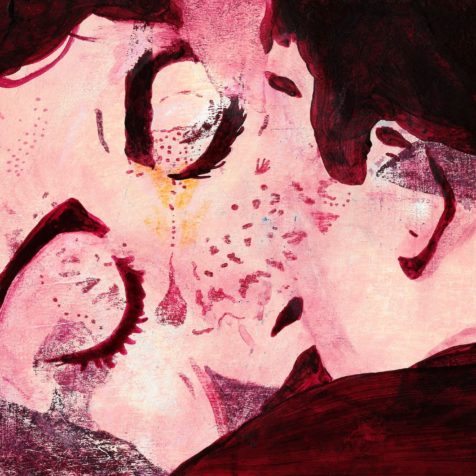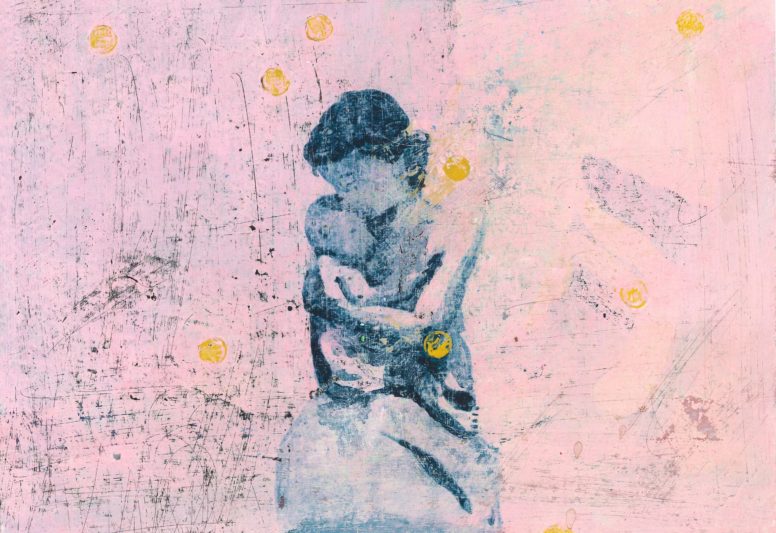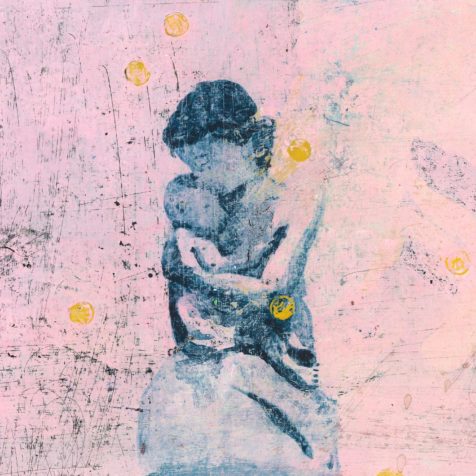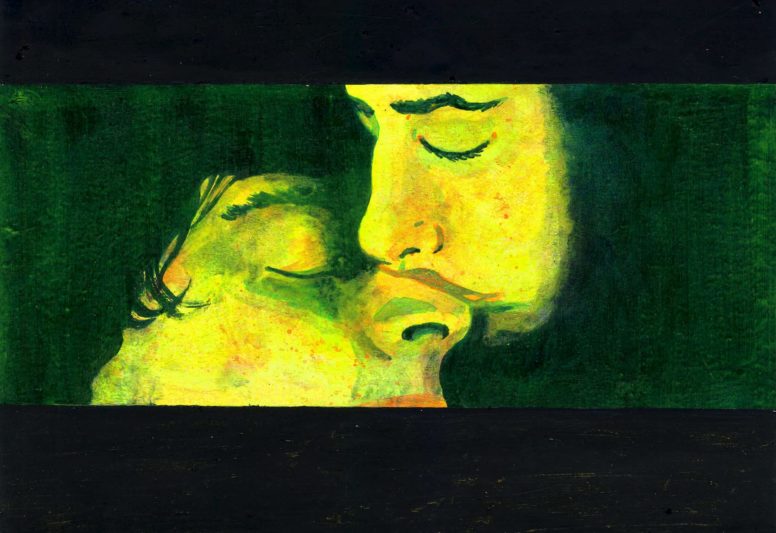Cecile Broekaert
In 2019 Cecile Broekaert (1997, Antwerp) studied illustration at LUCA School Of Arts in Ghent afterwards she finished a masters degree in liberal arts about: “How imagery can affect (the feeling of) solitude”.
Cecile’s works consist of a vast collection of images that she keeps aligned in boxes like family pictures. Fragments that can be regrouped in series or into typologies: landscapes, portraits, objects, plants, night scenes…
With their appealing colours, they might look innocent at first sight ; pretty pictures, details of decorative objects. But like make-up or masks, that’s only a façade, hiding an underlying feeling of melancholy or nostalgia for a time or place you’ve never known.
A monotype print or an engraving sometimes hide under the layers of paint and oil pastel of these cinematographic nocturnal views. Cecile covers up and scratches the surface, carving shapes into the images. Each faceless character becomes a palimpsest, the accumulation of different stories into a blurry memory.
In the 21/22 season, Cecile entered into an artistic dialogue with the productions of B’Rock Orchestra, and translates our programmes into her own visual language, based on associations and triggers she encounters in our musical plans.
Cecile created a new image for each production and also supported our educational projects.
How would you describe your art?
CECILE “Others have described my work as seemingly dreamy, nostalgic images with vibrant colours, but with a melancholic dark side. I also have a number of recurring subjects such as flowers, masks, old toys, night in the city, the kiss or the embrace, and the portrait. So subconsciously I return to these subjects, but I always try to develop them in a different way. My works are often a convergence of diverse images and materials. I hardly ever start with a blank canvas. A sub-layer or sub-drawing must first be present before I really start to think about what I want to depict. In addition, something is also hiding under the layers of paint itself. For example, I sometimes sand away layers of paint or scratch a fine drawing through the layers with a needle. I also incorporate printing techniques such as monotypes where you place a leaf on an inked plate and draw on the back through the layers. This creates subtle drawings and reliefs that only become visible when looking at them firsthand and with the right lighting. I like to see the viewer glued to my images, looking for a hidden detail or an ‘invisible’ drawing.”
You often use canvases on which something has already been drawn or written, and you don’t often start with a blank slate: why is this?
CECILE “That’s right! The way I work actually follows a kind of fixed ritual in which I often take a cardboard substrate, but now and then also canvas or sturdy paper, and I start to paint ‘something’ on it. That something can in fact be a bit of anything. Sometimes I replicate an old advertisement, other times a photo from the past, and still other times it’s a film still from a cartoon I used to watch as a child. For me, it’s mainly about the colour combinations and composition, and not so much about the image itself, which is simply a way to get started. Once I have replicated the image, it disappears by painting over it again and/or sanding and scraping away. Only then do I start thinking about what I want to portray in the foreground or do I see a recognisable shape through what was sanded and painted over, which I then work on further. It’s a tactic to avoid the fear of a blank canvas and to work on something with confidence. That’s why painting suits me so well. If it’s not right or I’ve overworked something, I can always paint over it. For some works, three and four layers of paint and relief are present before I arrive at a truly finished image.”
From where can you take inspiration?
CECILE Hmm, that’s difficult, since I gather my inspiration or source material a bit from everywhere. I get the most inspiration mainly from photos and film material. People then immediately ask me which films I like or prefer to watch, but I always have to disappoint them because I watch anything and often don’t care about the story or about a certain actor or director. For example, I scan old magazines or film databases in search of an image that intrigues me for one reason or another. In this way, I’ve collected a folder full of images of, among other things, skaters probably from some Scandinavian country filmed by an amateur filmmaker. Or I once came across amateur images of an old woman filming her blooming plants in her garden. I am so charmed by the attention and love in those images, but also by the clumsiness with which the subjects are portrayed. In addition, I also like to browse flea markets and second-hand shops in search of old toys, magazines, drawing materials, photo/lifestyle or nature books, and so on. There’s often a nostalgic undertone in my work that reverts to those old, lost or ownerless objects, but I always try to combine this with a melancholic – sometimes ominous – afterthought. Because these objects or images from a bygone era do not illustrate a ‘better’ or ‘nicer’ time. They only show us a period that has passed, but which we now look back on with nostalgic and romantic eyes.
What traits do you and B’Rock have in common as an artist?
CECILE “I think perhaps it is especially the contemporary, innovative look at the ‘old’. When I went through the different productions to see what they were all about, I noticed that the old stories that have been around for decades such as ‘Orpheus’ or ‘Requiem’ speak to me in a very lively and contemporary way. Not only because of the clear synopsis that is always available on the website, but also effectively on stage. A form of nostalgia for the old could take the upper hand, but it’s the contemporary interpretation that ensures that this does not happen. In addition, I was also very reassured that many visual or narrative elements were always treated. That’s something I also deal with in my artistic work, but that also strongly appeals to the imagination as listener.”
Have you always known you wanted to be a visual artist? How did this reveal itself as a child?
CECILE “As a child I wanted to be a florist or teacher (laughs). I guess I had no idea that ‘the artist’ still existed. I thought they only lived in my dad’s art books. If someone had explained to me at the time that artists really weren’t extinct, I might have had a third option: florist, teacher or artist. From the age of 6 or 7, I went to drawing school each Friday evening with a plastic briefcase full of drawing material. This continued for some six years. It was the one pastime that stuck with me and that I always enjoyed. In fact, I really looked forward to it (and I couldn’t say that about the tennis, dance or swimming lessons). At home there was also a lot of drawing material lying around and the start of each holiday meant a visit to the art supplies shop. There my brother and I could both choose a sketchbook and a pack of markers or coloured pencils. We would take the sketchbooks with us to the zoo, the Belgian coast or on camping holidays to France. It was only many years later when I took up more and more art subjects in secondary school and finally made the decision to opt for higher art education that I realised that being a visual artist was really something for me.”
You also have an interest in art education. Why this interest and what would you most like to do?
CECILE “Having attended drawing school for so long and having attended art secondary and higher education, I know how enormously liberating and pleasant such environments can be. While regular education tends to give a lot of attention or interest to what you cannot or do not succeed in, it’s often the opposite in art education. I also get a lot of satisfaction from helping others. I’ve always been a bit of a pioneer, and I try to get everyone involved in a project. The fact that you can then combine both – offering help where necessary and assisting someone in his/her creative process – is a win-win situation for me. I don’t really have a preconceived goal in mind for art education. I’m currently also testing different workplaces to see what suits me best. Anyway, I would like to end up somewhere where the ‘learner’ also wants to truly learn. That may sound a bit vague, but what I really want to say is that I prefer to work with students who have either consciously chosen an artistic education or who may not have done so but who are enthusiastic. I don’t think anyone would be happy with a situation in which someone doesn’t want to learn/experiment/work and is simply forced to work by me because I’m a teacher. That can’t be what it’s all about.”
What past achievements are you proud of?
CECILE “I feel like I’ve conquered the post-graduation blues. After the master’s at LUCA, many fall into a black hole. I was no exception. You are removed from a familiar environment where the only focus was your creative process and where you are unaware that the ease with which you can simply wander into a studio and discover a new technique or admire someone else’s work is a real privilege that is unique to the school. Given the circumstances, to be able to continue working in what I believe in does a lot if it is also rewarded. I can happily say that I’ve already been able to exhibit my works several times at among others the MSK in Ghent, and those are always very special moments. It’s not so much the surroundings that play a major role in this (although I still find it incredible that my work hangs in the vicinity of James Ensor), but especially the feedback received from visitors and organisers is more important to me than I expected. People sometimes have their own interpretations of your work that you wouldn’t have come up with yourself. This often transcends mere nice compliments and I’ve already made connections with people through my work. Something I never thought of during the creative process, but of which I am very proud. The photos of my works on the walls of those people’s homes, where I can sense their genuine happiness, remain “pinch-me” moments.”
